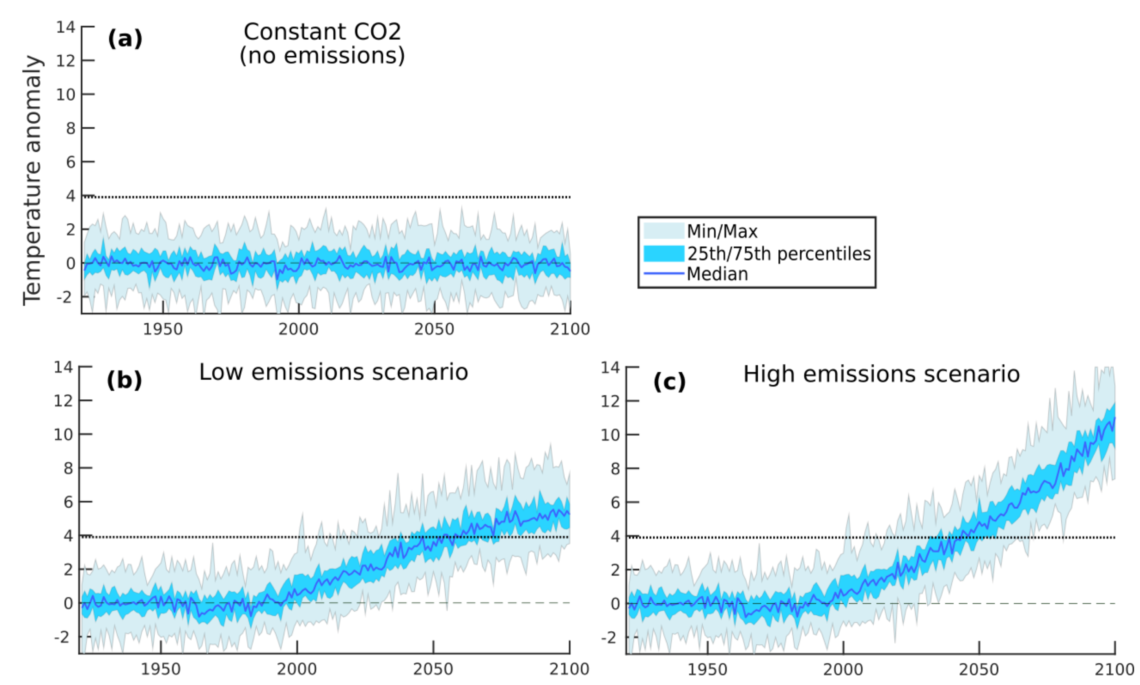August 23rd, 2021
Key Findings
- Analyses using a new high-resolution climate model (SPEAR) suggest that an extreme heat event in Alaska in June-July 2019 was made up to 6% more likely by the impacts of increasing greenhouse gases.
- Such events are likely to become far more common in the future, with the actual increase dependent on the future rate of greenhouse gas emissions.
- Research suggests these events may occur as frequently as every other year by the 2060s, even assuming moderate scenarios of future greenhouse gas emissions.
Sarah Weidman, Thomas L. Delworth, Sarah Kapnick, William F. Cooke. Earth’s Future. DOI: 10.1029/2021EF002163
An extreme heat event, breaking all previous records, occurred over southwestern Alaska in the summer of 2019. Extreme heat can have significant societal and economic effects, including damaging roads and infrastructure, displacing marine ecosystems, and increasing wildfire risk, with disproportionate costs to Alaska’s rural and indigenous communities. The authors examined the extent to which human-driven climate change played a role in increasing the likelihood of experiencing such an extreme event.
The study finds that the 2019 extreme heat was made up to 6% more likely by the impacts of increasing greenhouse gases. Projections for the rest of the 21st century show that such extreme heat events will become much more likely. The increase in frequency will depend upon future greenhouse gas emissions, but such events may occur on average every other year by the 2060s, even assuming moderate scenarios of future greenhouse gas emissions.
To assess this summer heatwave the authors used observations, as well as output from large ensembles of experiments comprising thousands of simulated years, using SPEAR, a new high-resolution climate model developed at GFDL. This model is designed as a seamless prediction and projection system that focuses on time scales from seasonal to multidecadal, and is used for real-time seasonal prediction, real-time decadal prediction and multidecadal climate projection.
It is vital to improve our understanding of the causes of such events and the extent to which anthropogenic forcing may alter their likelihood and magnitude. This study provides important information that will help in decision making related to future climate risk, to build resiliency.



